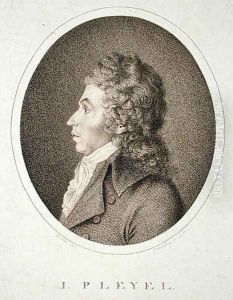Guerin Paintings
Pierre-Narcisse Guérin was a French painter born on May 13, 1774, in Paris, France. He was one of the prominent figures in French painting during the early 19th century, with a style that reflected the transition from Neoclassicism to Romanticism. Guérin studied under Jean-Baptiste Regnault and entered the prestigious École des Beaux-Arts in Paris, where he honed his artistic skills. His early works were influenced by ancient Greek and Roman art, as well as by the paintings of Nicolas Poussin and Jacques-Louis David, leading figures in Neoclassical art.
Guérin's career was marked by his success in the official art exhibitions of the time, known as the Salons. He won the Prix de Rome in 1797 for his work 'Marcus Sextus,' which allowed him to study in Rome at the French Academy. This experience further shaped his artistic development, and he was exposed to the works of Renaissance masters and the emerging Romantic sensibility. Upon his return to Paris, Guérin established a reputation as a leading painter with his large-scale mythological and historical paintings.
In addition to his artistic achievements, Guérin was also an influential teacher. He taught at the École des Beaux-Arts, where he instructed a new generation of artists, including Eugène Delacroix and Théodore Géricault, who would become central figures in the Romantic movement. Throughout his career, Guérin adapted his style to incorporate the more expressive and emotive qualities that characterized Romanticism, while maintaining a commitment to classical compositional principles.
Pierre-Narcisse Guérin died on July 6, 1833, in Rome, where he was serving as the director of the French Academy. His legacy is preserved in his contributions to the development of French art and his influence on the artists who followed him. Guérin's works can be found in various museums and collections around the world, reflecting his enduring significance in the history of art.
